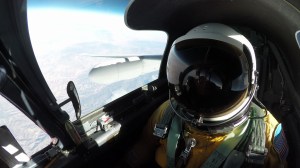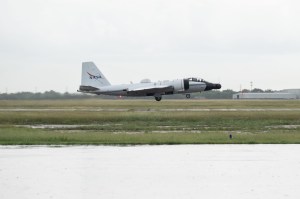
The asteroid and comet-hunting infrared space telescope has gathered an impressive haul of observations, but it’s now at the mercy of the Sun, which is accelerating its demise.
NASA’s NEOWISE has had a busy decade. Since its reactivated mission began on Dec. 13, 2013, the space telescope has discovered a once-in-a-lifetime comet, observed more than 3,000 near-Earth objects, bolstered international planetary defense strategies, and supported another NASA mission’s rendezvous with a distant asteroid. And that’s just a partial list of accomplishments.
But all good things must come to an end: Solar activity is causing NEOWISE – short for Near-Earth Object Wide-field Infrared Survey Explorer – to fall out of orbit. By early 2025, the spacecraft is expected to drop low enough into Earth’s atmosphere that it will become unusable. Eventually, it will reenter our atmosphere, entirely burning up.
About every 11 years, the Sun experiences a cycle of increased activity that peaks during a period called solar maximum. Explosive events, such as solar flares and coronal mass ejections, become more frequent and heat up our planet’s atmosphere, causing it to expand. Atmospheric gases increase drag on satellites orbiting Earth, slowing them down. With the Sun currently approaching its next maximum, NEOWISE will no longer be able to maintain its orbit above our atmosphere.
“The mission has planned for this day a long time. After several years of calm, the Sun is waking back up,” said Joseph Masiero, NEOWISE’s deputy principal investigator and a scientist at IPAC, a research organization at Caltech in Pasadena, California. “We are at the mercy of solar activity, and with no means to keep us in orbit, NEOWISE is now slowly spiraling back to Earth.”
WISE Beginnings
The past 10 years represent a second life for the spacecraft. Managed by NASA’s Jet Propulsion Laboratory in Southern California, NEOWISE repurposed a different mission that launched in 2009: the Wide-field Infrared Survey Explorer (WISE). Data from WISE and NEOWISE has been used to study distant galaxies, cool stars, exploding white dwarf stars, outgassing comets, near-Earth asteroids, and more.
In 2010, WISE achieved its scientific goal of conducting an all-sky infrared survey with far greater sensitivity than previous surveys. The WISE mission also found tens of millions of actively feeding supermassive black holes across the sky. Through the Disk Detective project, citizen scientists have used WISE data to find circumstellar disks, which are spinning clouds of gas, dust, and rubble around stars.
Invisible to the naked eye, infrared wavelengths are emitted by warm objects. To keep the heat generated by WISE itself from interfering with its observations of infrared wavelengths, the spacecraft relied on cryogenic coolant. After the coolant ran out and WISE had mapped the sky twice, NASA put the spacecraft into hibernation in February 2011.
Without coolant, the space telescope could no longer observe the universe’s coldest objects, but it could still see near-Earth asteroids and comets, which are heated by the Sun. So NASA reactivated the spacecraft in 2013 with a more specialized role in mind: aiding planetary defense efforts by surveying and studying those objects, which can stray into our planet’s orbital neighborhood and create a potential impact hazard.
Astronomers could not only rely on the mission to seek out these objects, but also use its data to figure out their size and albedo – how much sunlight their surfaces reflect – and to gather clues about the minerals and rocks they’re composed of.
“NEOWISE has showcased the importance of having an infrared space survey telescope as part of NASA’s planetary defense strategy while also keeping tabs on other objects in the solar system and beyond,” said Amy Mainzer, the mission’s principal investigator at the University of Arizona in Tucson.
Mainzer is also leading NASA’s upcoming NEO Surveyor, which will build on NEOWISE’s legacy. The next-generation infrared space telescope will seek out some of the hardest-to-find near-Earth objects, such as dark asteroids and comets that don’t reflect much visible light, as well as objects that approach Earth from the direction of the Sun. Scheduled for launch in 2027, the JPL-managed mission will also search for objects known as Earth Trojans – asteroids that lead or trail our planet’s orbit – the first of which WISE discovered in 2011.
Comet NEOWISE and Beyond
Since becoming NEOWISE, the mission has scanned the entire sky over 20 times and made 1.45 million infrared measurements of over 44,000 solar system objects. That includes more than 3,000 near-Earth objects, 215 of which NEOWISE discovered. Data from the mission has contributed to refining the orbits of these objects while gauging their size as well.
Its forte is characterizing near-Earth asteroids. In 2021, NEOWISE became a key component of an international planetary defense exercise that focused on the hazardous asteroid Apophis.
The mission has also discovered 25 comets, including the long-period comet C/2020 F3 (NEOWISE). The comet became a dazzling celestial object visible in the Northern Hemisphere for several weeks in 2020 and the first comet that could be seen by the naked eye since 2007, when Comet McNaught was primarily visible in the Southern Hemisphere.
Future researchers will continue to rely on the vast archive of NEOWISE observations to make new discoveries, similar to the way researchers used WISE data from 2010 long after the observations were made to characterize asteroid Dinkinesh in support of NASA’s Lucy mission before its October 2023 encounter.
“This is a bittersweet moment. It’s sad to see this trailblazing mission come to an end, but we know there’s more treasure hiding in the survey data,” said Masiero. “NEOWISE has a vast archive, covering a very long period of time, that will inevitably advance the science of the infrared universe long after the spacecraft is gone.”
More About the Mission
NEOWISE and NEO Surveyor support the objectives of NASA’s Planetary Defense Coordination Office (PDCO) at NASA Headquarters in Washington. The NASA Authorization Act of 2005 directed NASA to discover and characterize at least 90% of the near-Earth objects more than 140 meters (460 feet) across that come within 30 million miles (48 million kilometers) of our planet’s orbit. Objects of this size can cause significant regional damage, or worse, should they impact the Earth.
JPL manages and operates the NEOWISE mission for PDCO within the Science Mission Directorate. The Space Dynamics Laboratory in Logan, Utah, built the science instrument. Ball Aerospace & Technologies Corp. of Boulder, Colorado, built the spacecraft. Science data processing takes place at IPAC at Caltech. Caltech manages JPL for NASA.
For more information about NEOWISE, visit:
News Media Contact
Ian J. O’Neill
Jet Propulsion Laboratory, Pasadena, Calif.
818-354-2649
ian.j.oneill@jpl.nasa.gov
2023-182




























